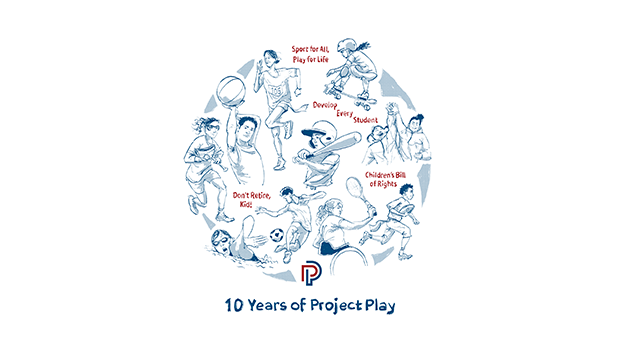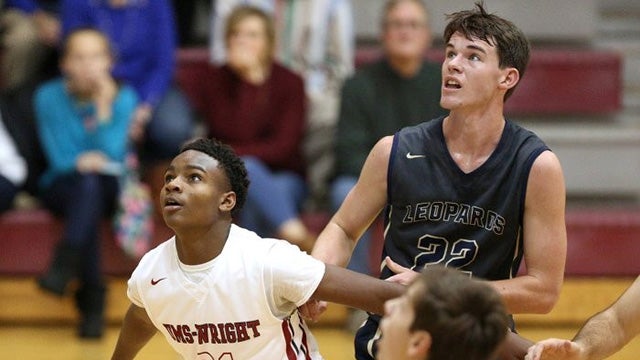The Aspen Institute Sports & Society Program analyzed the landscape of youth sports in Hawai‘i from December 2018 to June 2019. State of Play Hawai‘i is a snapshot of how well adults are serving youth through sports, including sections describing the sport ecosystem in each of the four counties. The findings for this report were guided by a task force of local leaders with deep experience with both sports and youth, and were obtained through interviews with a broad variety of stakeholders, focus group discussions, youth and adult surveys, existing studies and data, and media reports.
FIVE STATEWIDE FINDINGS
- The variety of sport activities enjoyed by children is unique and shaped by Hawaiian culture. The people of Hawai‘i define their sports broadly and pursue them passionately, in some cases not just as sports but as cultural activities, as they do with paddling, surfing and hula. Like its food, music and language, sports in Hawai‘i reflect its multiculturalism, with sports that were born here and others that landed from other places. So do the state’s athletes. The “mixedplate” lunch, created by immigrant laborers of different lands sharing their food, is a perfect metaphor to describe the sports landscape, in which the average youth who plays sports participates in 2.93 of them – well above the U.S. average of 2.01.
- Hawai‘i is blessed with tremendous assets in building physically active lifestyles. Its citizens have a tropical climate and access to one of the world’s great playgrounds, the Pacific Ocean. State law maintains public access to every beach. However, these can also present barriers to participation. The midday heat creates need for cover during the day, or lights for programs after the sun sets. Making full use of the ocean mandates that swimming, a lifesaving skill, be taught and mastered. The inability to swim has become a marker of poverty, with too few programs offering swim lessons. Too few lifeguards at beaches and pools, limit access to an array of water sports.
- The divide between private- and public-school athletics is very pronounced. The state’s private schools are models of excellence, especially in sports. For many families, getting their children into private school is the ultimate goal. The teams in those schools are filled with top athletes, which grows pressure on children to specialize in one sport early, often before age 10 and often through private clubs. That can boost costs: The average Hawaiian family pays $732 per child, per season, per sport, higher than the national average. Many kids just don’t last long in sports, barely two years on average. The focus on private schools leaves public schools with fewer advocates and fewer parents with a stake in making the public school system better.
- The culture of football dominates, bringing opportunities and challenges. Lately, Hawai‘i has produced some of the country’s best football quarterbacks, among them Marcus Mariota, Tua Tagovailoa, and McKenzie Milton, stoking the fever for football and, indirectly, other sports where college athletic scholarships are in play. The common refrain, “sports or military,” speaks to the view that sports, like enlistment, can be the only way out of a challenging home or neighborhood. This aspiration is both a blessing and a curse, as academic scholarships are far more plentiful than athletic aid. Questions have been raised as well about equitable distribution of school resources across genders and sports, along with safety concerns.
- Transportation is a major challenge for sport programs on all islands. Just the prospect of getting youth to practices and games can discourage sign-ups. Kids are ditching local leagues at young ages to play year-round for teams farther from home, relying almost solely on parents and cars for transportation. About 89% of kids surveyed reported that a family member drives them to practice or games. School and city buses aren’t great options—our data show that Hawaiian youth playing sports use them at half the national average. Rarely do kids walk or bike to practice, either.
The urban-rural divide often dictates access to programs and facilities, and favors those who live in or around Honolulu, Hilo, Wailuku and Lihue. The rural islands of Moloka‘i, Lāna‘i and Kaua‘i perennially cope with the challenges of relative isolation. Underlying each sport ecosystem are communities of great need. Data show that Native Hawaiians, who have experienced a long history of physical and cultural subjugation, consistently experience the highest health risks of any other group in the state, stemming from economic and cultural stress, lifestyle and lack of, or late access to health care.
Native Hawaiians have among the lowest mean household incomes and the highest rates of poverty among ethnic groups in the state. Because Native Hawaiians also have larger families on average, their per capita incomes are lower, a hardship magnified because Hawai‘i has the highest cost of living of any state in the country. That’s one reason, in our report, we explore the potential of expanding access to sports and activities tied to Native Hawaiian culture. Sports tend to thrive when there is a strong sense of community. The state’s greatest strength is its culture and a growing desire of its kamali‘i to reconnect with tradition and language. That reconnection can lead naturally to improving physical and sports literacy in the state. The future lies in the recovery of what was forgotten, suppressed and lost to the past.

